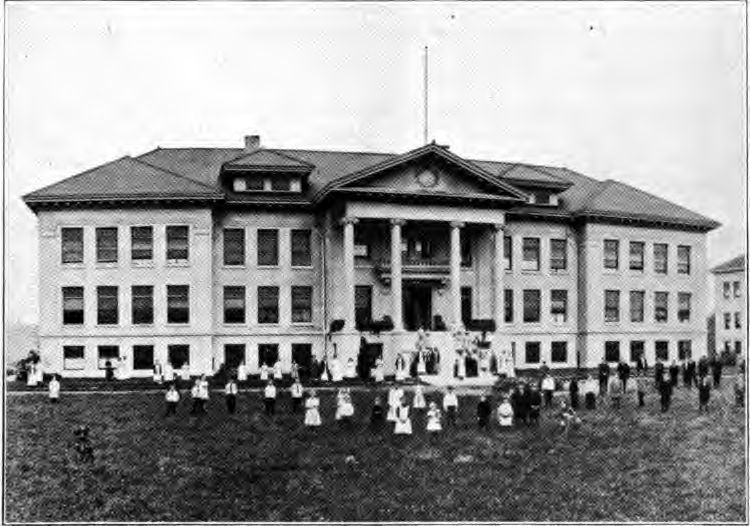Type Public Athletics conference OSAA Casco League 1A-2 Phone +1 503-378-3825 Number of students 63 | Principal Matthew Boyd Website www.osd.k12.or.us Mascot Panthers Color Purple and gold | |
 | ||
Superintendent Dr. Sharla Jones, effective July 2013 Accreditation Northwest Accreditation Commission Profiles | ||
Oregon school for the deaf
Oregon School for the Deaf (OSD), is a public school in Salem, Oregon, United States that serves deaf and hard of hearing students from kindergarten through high school and up to 18 years of age.
Contents
- Oregon school for the deaf
- History
- Academics
- Buildings in named in honor of staff and alumni
- Extreme MakoverHome Edition
- Nightmare Factory
- References
Oregon school for the deaf
History
Established in November 1870 by the Oregon Legislative Assembly as the Deaf and Mute Institute to provide free public education to deaf children, it is one of the oldest continuously operating schools in Oregon. It is operated by the Oregon Department of Education, and has been accredited by Northwest Association of Accredited Schools since 2004 and also by the Conference of Educational Administrators of Schools and Programs for the Deaf.
Academics
There is a program to teach living skills for students who have modified diplomas or certificates called ESP. OSD has honors, AP and career courses. It serves students who are deaf or heard of hearing in their Community Based Instruction program.
As of the 2004-05 academic year, the total full-time enrollment of the school, exclusive of cooperative programs with local school districts, was between 125 and 135.
In 2005, by order of the state legislature included in its annual appropriation for the school, study was begun on the potential benefit of moving the Oregon School for the Blind to the OSD campus. Oregon Superintendent of Public Instruction Susan Castillo has rejected a proposal for services now provided by the school to be provided instead through contracts with other public or private institutions.
Buildings in named in honor of staff and alumni
The Main Building and School Building were razed in December 1975 without authorization from the State Legislature.
Extreme Makover:Home Edition
Episode 172 In this special Halloween episode, Ty and the gang help renovate the school's Nightmare Factory, which is a haunted house in which the proceeds are used to keep the school afloat. Instead of Ty shouting with his bullhorn to surprise the school, he sends a small plane with a visual message while the staff and students are having their annual barbecue. While the students are in Minnesota getting new hearing aids, the team builds a new dormitory for the boys as their old dorms along with the Nightmare Factory was considered unsafe to live in. Guest stars include actress Marlee Matlin and Rob Zombie.
Since then, the new dormitory has been rarely utilized due to budget constrictions.
Nightmare Factory
Nightmare Factory Salem The haunted house was founded in 1987.
